 W
WThis is a list of wars involving the Republic of India and its predecessor states.
 W
WThe Indian Rebellion of 1857 was a major, but ultimately unsuccessful, uprising in India in 1857–58 against the rule of the British East India Company, which functioned as a sovereign power on behalf of the British Crown. The rebellion began on 10 May 1857 in the form of a mutiny of sepoys of the Company's army in the garrison town of Meerut, 40 mi (64 km) northeast of Delhi. It then erupted into other mutinies and civilian rebellions chiefly in the upper Gangetic plain and central India, though incidents of revolt also occurred farther north and east. The rebellion posed a considerable threat to British power in that region, and was contained only with the rebels' defeat in Gwalior on 20 June 1858. On 1 November 1858, the British granted amnesty to all rebels not involved in murder, though they did not declare the hostilities to have formally ended until 8 July 1859. Its name is contested, and it is variously described as the Sepoy Mutiny, the Indian Mutiny, the Great Rebellion, the Revolt of 1857, the Indian Insurrection, and the First War of Independence.
 W
WAfter the 2008 Mumbai attacks, Pakistan and the ISI were believed by India to be directly responsible for the attacks, leading to strained relations between the two countries for a period of time. An Anti-Pakistani sentiment also rose in India, causing many, including the United States to call for probes into it.
 W
WThe 2013 India–Pakistan border incidents was a series of armed skirmishes along the Line of Control (LoC) in the disputed Kashmir area. Starting from the mid-January 2013, they have been described as the "worst bout of fighting in the region in nearly 10 years". It began on 6 January 2013, when according to Pakistani reports Indian forces attacked a Pakistani border post, killing one soldier. Indian authorities claimed the incident as a retaliation against preceding Pakistani ceasefire violations, but denied having crossed the demarcation line. In a second skirmish on 8 January, Indian authorities said that Pakistani forces crossed the LoC, killing two Indian soldiers. The incident sparked outrage in India and harsh reactions by the Indian army and government over the news that the body of one of the soldiers had been beheaded. Pakistan denied these reports. On 15 January, a third skirmish reportedly led to the death of another Pakistani soldier.
 W
WThe 2014–2015 India–Pakistan border skirmishes were a series of armed clashes and exchanges of gunfire between the Indian Border Security Force and the Pakistan Rangers: the paramilitary gendarmerie forces of both nations, responsible for patrolling the India-Pakistan border) along the Line of Control (LoC) in the disputed Kashmir region and the borders of the Punjab. Tensions began in mid-July 2014, with both countries' military officials and media reports giving different accounts of the incidents and accusing each other of initiating the hostilities. The incident sparked outrage in both countries and harsh reactions by the Indian and Pakistani militaries and the Indian and Pakistani governments.
 W
WThe Carnatic Wars were a series of military conflicts in the middle of the 18th century in India. The conflicts involved numerous nominally independent rulers and their vassals, struggles for succession and territory; and included a diplomatic and military struggle between the French East India Company and the British East India Company. They were mainly fought within the territories of Mughal India with the assistance of various fragmented polities loyal to the "Great Moghul". As a result of these military contests, the British East India Company established its dominance among the European trading companies within India. The French company was pushed to a corner and was confined primarily to Pondichéry. The East India Company's dominance eventually led to control by the British Company over most of India and eventually to the establishment of the British Raj.
 W
WThe First Carnatic War (1746–1748) was the Indian theatre of the War of the Austrian Succession and the first of a series of Carnatic Wars that established early British dominance on the east coast of the Indian subcontinent. In this conflict the British and French East India Companies vied with each other on land for control of their respective trading posts at Madras, Pondicherry, and Cuddalore, while naval forces of France and Britain engaged each other off the coast. The war set the stage for the rapid growth of French hegemony in southern India under the command of French Governor-General Joseph François Dupleix in the Second Carnatic War.
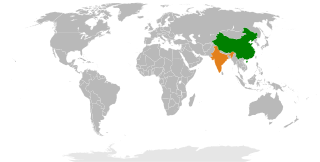 W
WThe Nathu La and Cho La clashes were a series of military clashes between India and China alongside the border of the Himalayan Kingdom of Sikkim, then an Indian protectorate.
 W
WThe Congo Crisis was a period of political upheaval and conflict in the Republic of the Congo between 1960 and 1965. The crisis began almost immediately after the Congo became independent from Belgium and ended, unofficially, with the entire country under the rule of Joseph-Désiré Mobutu. Constituting a series of civil wars, the Congo Crisis was also a proxy conflict in the Cold War, in which the Soviet Union and the United States supported opposing factions. Around 100,000 people are believed to have been killed during the crisis.
 W
WOperation Polo was the code name of the Hyderabad "police action" in September 1948, by the then newly independent Dominion of India against Hyderabad State. It was a military operation in which the Indian Armed Forces invaded the Nizam-ruled princely state, annexing it into the Indian Union.
 W
WSince the partition of British India in 1947 and creation of dominions of India and Pakistan, the two countries have been involved in a number of wars, conflicts and military stand-offs. The Kashmir issue and across the border terrorism have been the cause of conflicts between the two countries mostly with the exception of the Indo-Pakistani War of 1971 where conflict originated due to turmoil in erstwhile East Pakistan.
 W
WThe Indo-Pakistani War of 1947–1948, sometimes known as the First Kashmir War, was fought between India and Pakistan over the princely state of Jammu and Kashmir from 1947 to 1948. It was the first of four Indo-Pakistan Wars fought between the two newly independent nations. Pakistan precipitated the war a few weeks after independence by launching tribal lashkar (militia) from Waziristan, in an effort to capture Kashmir, the future of which hung in the balance. The inconclusive result of the war still affects the geopolitics of both countries.
 W
WThe Indo-Pakistani War of 1965 was a culmination of skirmishes that took place between April 1965 and September 1965 between Pakistan and India. The conflict began following Pakistan's Operation Gibraltar, which was designed to infiltrate forces into Jammu and Kashmir to precipitate an insurgency against Indian rule. India retaliated by launching a full-scale military attack on West Pakistan. The seventeen-day war caused thousands of casualties on both sides and witnessed the largest engagement of armored vehicles and the largest tank battle since World War II. Hostilities between the two countries ended after a United Nations-mandated ceasefire was declared following diplomatic intervention by the Soviet Union and the United States, and the subsequent issuance of the Tashkent Declaration. Much of the war was fought by the countries' land forces in Kashmir and along the border between India and Pakistan. This war saw the largest amassing of troops in Kashmir since the Partition of India in 1947, a number that was overshadowed only during the 2001–2002 military standoff between India and Pakistan. Most of the battles were fought by opposing infantry and armoured units, with substantial backing from air forces, and naval operations.
 W
WThe Indo-Pakistani War of 1971 was a military confrontation between India and Pakistan that occurred during the liberation war in East Pakistan from 3 December 1971 to the fall of Dacca (Dhaka) on 16 December 1971. The war began with preemptive aerial strikes on 11 Indian air stations, which led to the commencement of hostilities with Pakistan and Indian entry into the war of independence in East Pakistan on the side of Bengali nationalist forces. Lasting just 13 days, it is one of the shortest wars in history.
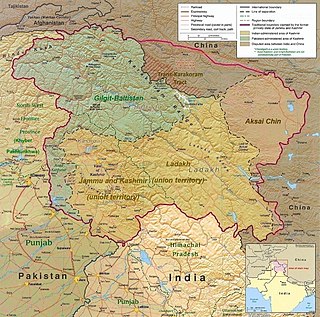 W
WThe insurgency in Jammu and Kashmir is an uprising or revolt against the Indian administration of Jammu and Kashmir, a region constituting the southern portion of the larger Kashmir region, which has been the subject of a dispute between India and Pakistan since 1947.
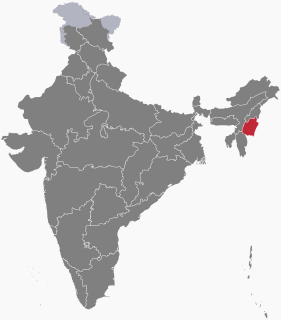 W
WThe Insurgency in Manipur is an ongoing armed conflict between India and a number of separatist rebel groups, taking place in the region of Manipur. The Insurgency in Manipur is part of the wider Insurgency in Northeast India; it combines elements of a national liberation war as well as an ethnic conflict.
 W
WThe Insurgency in Meghalaya is a frozen armed conflict between India and a number of separatist rebel groups which was taking place in the state of Meghalaya. The Insurgency in Meghalaya is part of the wider Insurgency in Northeast India, and was fueled by demands of the Khasi, Synteng and Garo people for a separate state.
 W
WThe Insurgency in Arunachal Pradesh is a part of the larger Northeast India insurgency involving multiple groups trying to separate from or destabilize the province. Because of Arunachal Pradesh's close proximity to the border, many groups are able to use border crossings to promote their terrorist activity. Since Arunachal Pradesh's recapture in the 1962 War, there has been incursions from the Chinese Army in the region further escalating the conflict. The conflict has slowed since the early 2000s due to police arrest of major insurgent leaders. The highly diverse ethnic and religious population of the province has also influenced various groups.
 W
WInsurgency in Northeast India involves multiple armed separatist factions operating in India's northeastern states, which are connected to the rest of India by the Siliguri Corridor, a strip of land as narrow as 14.29 miles (23.00 km) wide. Most factions favour a separate nation while others seek regional autonomy, some groups demand complete independence and others demand religious law.
 W
WThe insurgency in Tripura was an armed conflict which took place in the state of Tripura between India and several separatist rebel organisations. It was a part of the wider insurgency in Northeast India and was fueled by Tripuris who had become a minority in their own state because of immigration of Bengali people.
 W
WThe Kargil War, also known as the Kargil conflict, was an armed conflict between India and Pakistan that took place between May and July 1999 in the Kargil district of Kashmir and elsewhere along the Line of Control (LOC). In India, the conflict is also referred to as Operation Vijay, which was the name of the Indian operation to clear the Kargil sector. The Indian Air Force's role in acting jointly with Indian Army ground troops during the war was aimed at flushing out regular and irregular troops of the Pakistani Army from vacated Indian Positions in the Kargil sector along the Line of Control. This particular operation was given the code name Operation Safed Sagar.
 W
WThe 1988 Maldives coup d'état was the attempt by a group of Maldivians led by businessman Abdullah Luthufi and assisted by armed mercenaries of a Tamil secessionist organisation from Sri Lanka, the People's Liberation Organisation of Tamil Eelam (PLOTE), to overthrow the government in the island republic of Maldives. The coup d'état failed after the Indian Special Forces eliminated the rebel leaders of PLOTE. At the realization of the attacks failure, the rebel group hijacked a Maldivian freighter named MV Progresslight and attempted to escape to Sri Lanka. After the rebels escaped, the Indian Navy was called for help and they intercepted and captured the mercenaries and they were brought into custody in an operation codenamed Operation Cactus.
 W
WThe Mongol Empire launched several invasions into the Indian subcontinent from 1221 to 1327, with many of the later raids made by the Qaraunas of Mongol origin. The Mongols occupied parts of the subcontinent for decades. As the Mongols progressed into the Indian hinterland and reached the outskirts of Delhi, the Delhi Sultanate led a campaign against them in which the Mongol army suffered serious defeats.
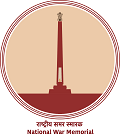 W
WThe National War Memorial is a monument built by the Government of India near India Gate, New Delhi, to honour the Indian Armed Forces. The memorial is spread over 40 acres of land and is built around the existing chhatri (canopy) near India Gate. The memorial wall is flushed with the ground and in harmony with existing aesthetics. The names of armed forces personnel martyred during the armed conflicts of Indo-Pakistani War of 1947, 1961 War in Goa, Sino-Indian War, Indo-Pakistani War of 1965, Indo-Pakistani War of 1971, 1987 (Siachen), 1987-88, 1999 (Kargil), and other operations such as Operation Rakshak, are inscribed on the memorial walls.
 W
WThe Naxalite–Maoist insurgency is an ongoing conflict between Maoist groups known as Naxalites or Naxals, and the Indian government. The insurgency started after the 2004 formation of the CPI-Maoists – a rebel group consisting of the PWG and the MCC. Their origin can be traced when the Communist Party of India (Marxist) split in 1967, leading to the creation of the Communist Party of India (Marxist–Leninist). In January 2005, talks between the Andhra Pradesh state government and the CPI-Maoists broke down and the rebels accused authorities of not addressing their demands for a written truce, release of prisoners and redistribution of land. The ongoing conflict had taken place over a vast territory with hundreds of people being killed annually in clashes between the CPI-Maoists and the government every year since 2005.
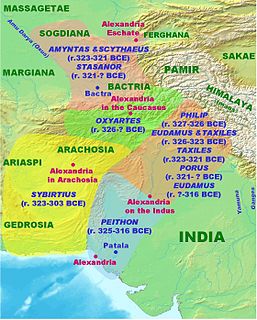 W
WThe Seleucid–Mauryan War was fought between 305 and 303 BCE. It started when Seleucus I Nicator, of the Seleucid Empire, sought to retake the Indian satrapies of the Macedonian Empire which had been occupied by Emperor Chandragupta Maurya, of the Maurya Empire.
 W
WThe Siachen conflict, sometimes referred to as the Siachen War, was a military conflict between India and Pakistan over the disputed Siachen Glacier region in Kashmir. A cease-fire went into effect in 2003. The contended area is nearly 1,000 square miles (2,600 km2) of territory. The conflict was started in 1984 by India's successful capture of the Siachen Glacier as part of Operation Meghdoot, and subsequently countinued with Operation Rajiv. India took control of the 70-kilometre-long (43 mi) Siachen Glacier and its tributary glaciers, as well as all the main passes and heights of the Saltoro Ridge immediately west of the glacier, including Sia La, Bilafond La, and Gyong La. Pakistan controls the glacial valleys immediately west of the Saltoro Ridge. According to TIME magazine, India gained control of more than 2500 km2 of territory because of its military operations in Siachen.
 W
WIn 1986–87, a military standoff took place between India and China in the Sumdorong Chu Valley bordering the Tawang district, Arunachal Pradesh and Cona County, Tibet. It was initiated by China moving a company of troops to Wangdung, a pasture to the south of Sumdorong Chu that India believed to be its territory. The Indian troops stood their ground on the neighbouring Longro La ridge and both the sides moved a large number of troops to the border. The crisis was diffused after the visit of Indian External Affairs minister to Beijing in May 1987. The standoff was the first military confrontation along the disputed McMahon Line after the 1962 war and gave rise to fears of escalation. Subsequently, India and China formulated agreements for managing future border tensions.
 W
WThe Sino-Indian War, also known as the Indo-China War and Sino-Indian Border Conflict, was a war between China and India that occurred in 1962. A Chinese disputed Himalayan border was the main cause of the war. There had been a series of violent border skirmishes between the two countries after the 1959 Tibetan uprising, when India granted asylum to the Dalai Lama. India initiated a defensive Forward Policy from 1960 to hinder Chinese military patrols and logistics, in which it placed outposts along the border, including several north of the McMahon Line, the eastern portion of the Line of Actual Control proclaimed by Chinese Premier Zhou Enlai in 1959.
 W
WThe Sri Lankan Civil War was a civil war fought in the island country of Sri Lanka from 1983 to 2009. Beginning on 23 July 1983, there was an intermittent insurgency against the government by the Velupillai Prabhakaran led Liberation Tigers of Tamil Eelam, which fought to create an independent Tamil state called Tamil Eelam in the north and the east of the island due to the continuous discrimination against the Sri Lankan Tamils by the Sinhalese dominated Sri Lankan Government, as well as the 1956, 1958 and 1977 anti-Tamil pogroms and the 1981 burning of the Jaffna Public Library carried out by the majority Sinhalese mobs, in the years following Sri Lanka's independence from Britain in 1948. After a 26-year military campaign, the Sri Lankan military defeated the Tamil Tigers in May 2009, bringing the civil war to an end.
 W
WThe War on terror, also known as the Global War on Terrorism and U.S. War on Terror, is an international military campaign launched by the United States government after the September 11 attacks. The targets of the campaign are primarily Sunni Islamic fundamentalist armed groups located throughout the Muslim world, with the most prominent groups being Al-Qaeda, the Islamic State, the Taliban, Tehrik-i-Taliban Pakistan, and the various franchise groups of the former two organizations. The naming of the campaign uses a metaphor of war to refer to a variety of actions that do not constitute a specific war as traditionally defined. U.S. president George W. Bush first used the term "war on terrorism" on 16 September 2001, and then "war on terror" a few days later in a formal speech to Congress. In the latter speech, George Bush stated, "Our enemy is a radical network of terrorists and every government that supports them." The term was originally used with a particular focus on countries associated with al-Qaeda. The term was immediately criticised by such people as Richard B. Myers, chairman of the Joint Chiefs of Staff, and more nuanced terms subsequently came to be used by the Bush administration to publicly define the international campaign led by the U.S. While it was never used as a formal designation of U.S. operations in internal government documentation, a Global War on Terrorism Service Medal was issued.
 W
WThe Carnatic Wars were a series of military conflicts in the middle of the 18th century in India. The conflicts involved numerous nominally independent rulers and their vassals, struggles for succession and territory; and included a diplomatic and military struggle between the French East India Company and the British East India Company. They were mainly fought within the territories of Mughal India with the assistance of various fragmented polities loyal to the "Great Moghul". As a result of these military contests, the British East India Company established its dominance among the European trading companies within India. The French company was pushed to a corner and was confined primarily to Pondichéry. The East India Company's dominance eventually led to control by the British Company over most of India and eventually to the establishment of the British Raj.
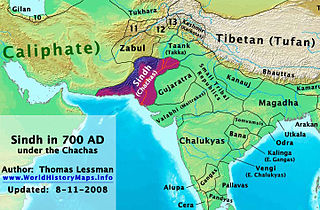 W
WIn the first half of the 8th century CE, a series of battles took place between the Umayyad Caliphate and the Indian kingdoms to the east of the Indus river.
 W
WThe Indian Army during World War I contributed a large number of divisions and independent brigades to the European, Mediterranean, Middle East and African theatres of war in World War I. Over one million Indian troops served overseas, of whom 62,000 died and another 67,000 were wounded. In total at least 74,187 Indian soldiers died during the war.
 W
WDuring the Second World War (1939–1945), India was controlled by the United Kingdom, with the British holding territories in India including over six hundred autonomous Princely States. British India officially declared war on Nazi Germany in September 1939. The British Raj, as part of the Allied Nations, sent over two and a half million soldiers to fight under British command against the Axis powers. The British government borrowed billions of pounds to help finance the war. India also provided the base for American operations in support of China in the China Burma India Theater.
 W
WWorld War II, also known as the Second World War, was a global war that lasted from 1939 to 1945. It involved the vast majority of the world's countries—including all the great powers—forming two opposing military alliances: the Allies and the Axis. In a state of total war, directly involving more than 100 million people from more than 30 countries, the major participants threw their entire economic, industrial, and scientific capabilities behind the war effort, blurring the distinction between civilian and military resources. World War II was the deadliest conflict in human history, marked by 70 to 85 million fatalities. Tens of millions of people died due to genocides, premeditated death from starvation, massacres, and disease. Aircraft played a major role in the conflict, including in the use of strategic bombing of population centres, and the only uses of nuclear weapons in war.